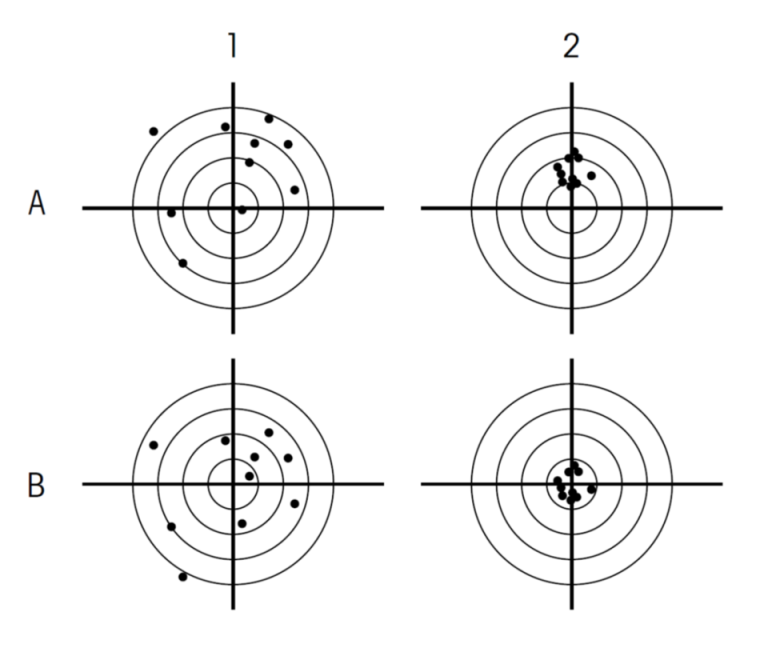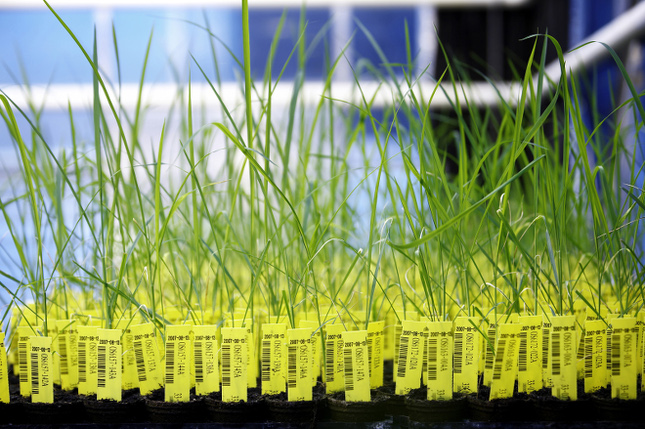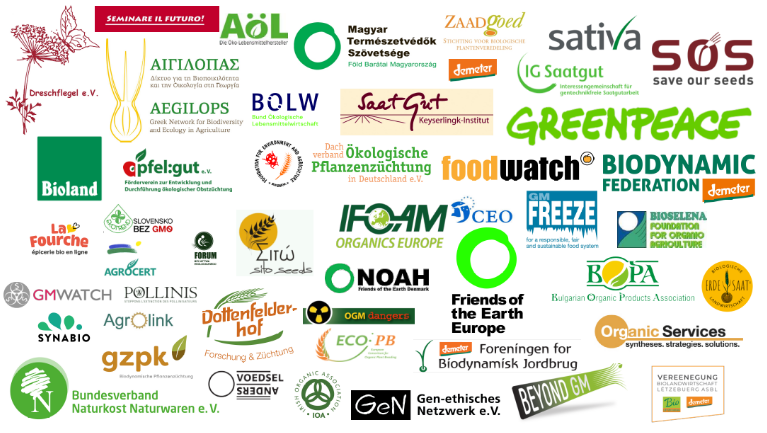The European Commission wants to put an end to GMOs

On July 5, 2023, the European Commission adopted a proposal to deregulate GMOs. In particular, it proposes to change the definition of a GMO. As a result, most current GMOs will no longer be considered as such. They will therefore be exempt from the (much-discussed) risk assessment, detection and traceability methods, labelling and post-marketing monitoring required under Directive 2001/18. The proposed semantics are far-sighted, aimed at anticipating future and as yet unknown biotechnological developments, with a very broad deregulation proposed.
After an initial unofficial version was circulated two weeks ago, the European Commission has finally adopted and made public a new, official and discreetly modified proposal. Contrary to its own assertions [1], this proposal aims to deregulate GMOs in Europe. Discussions will now begin with the Council of the European Union and the European Parliament on the basis of a document which, as of July 21, 2023, is only available in English…
One thing is already certain: the European Commission’s ambition is to have virtually no plants defined as GMOs in Europe in the decades to come (and therefore subject to risk assessment, authorization, labelling and traceability). In this article, Inf’OGM details the form and content chosen by the Commission. The aim is nothing less than to change the European definition of GMOs, which has been in force for over thirty years. To do this, let’s first analyze the principles underlying the Commission’s reasoning, then the nature of the organisms concerned by this proposal and, finally, the concrete deregulation measures.
Abusive starting points
The Commission based its reasoning on two assumptions set out in the explanatory memorandum introducing this proposed regulation. The first is that “products of targeted mutagenesis might not differ from those obtained via conventional breeding”. In the recitals of the regulation, the conditional becomes an affirmation. The Commission writes that “In certain cases, genetic modifications introduced by these techniques are indistinguishable with analytical methods from natural mutations or from genetic modifications introduced by conventional breeding techniques”. This assertion is far from being shared by all scientists, and Inf’OGM has already reported on the conditions under which such differentiation is possible, provided there is the political will [2]. But it doesn’t matter. The Commission proposes to transform these hypothetical special cases, these “certain cases”, into a conviction that will concern all plants.
This reasoning is not surprising. The European Commission has long worked to ensure that such traceability is not practically possible. At first, it long opposed work by its own experts on the subject [3] before finally, in 2018, co-writing an explanatory note with an industry representative. This note preceded by a few months the publication of a report by the European experts she had finally decided to mandate in early 2018. This report asserted that products derived from the new techniques are indeed detectable, differentiable and traceable, provided that “prior knowledge on the altered genome sequence, a validated detection method and certified reference materials” are available. But in its proposal for a regulation, the Commission focuses solely on the claimed genetic modifications taken one by one, and thus retains from the experts’ report only that “the same DNA alteration could have been obtained by conventional breeding or random mutagenesis techniques” [4].
The second assumption concerns the risks associated with the use of these plants. For the Commission, “given the amount of scientific evidence that is already available, in particular on their safety”, the requirements currently imposed by GMO legislation are “disproportionate or inadequate”. An surprising assertion since, as reported by the association Testbiotech at the end of 2022, the European Commission’s expert committee, the European Food Safety Authority (EFSA) “ explicitly states that their experts did not conduct a full literature search to compile a reasoned overview of unintended genetic changes, as this was not within their mandate.”, a mandate given by… the European Commission [5]. Yet this does not prevent the Commission from simply proposing, on the basis of “scientific evidence that is already available”, that no further risk analysis be carried out. And this justification should apply to any technique developed in the future and therefore still unknown!
On the basis of these two debatable assumptions, the European Commission is proposing that many plants currently defined as GMOs should no longer be so tomorrow.
The Commission wants to change the definition of a GMO
Contrary to what was written in the initial version of the proposal that was circulated [6], the Commission is proposing to change the very definition of a GMO. According to Article 2 point 2 of Directive 2001/18, a GMO is “an organism, with the exception of human beings, in which the genetic material has been altered in a way that does not occur naturally by mating and/or natural recombination” [7]. The same directive also specifies in its Annex 1B that certain genetic modification techniques result in GMOs exempt from the requirements of the legislation. In imprecise language, this annex of Directive 2001/18 lists the two techniques of genetic modification which are “(1) mutagenesis, (2) cell fusion (…) of plant cells of organisms which can exchange genetic material through traditional breeding methods.”. In its proposal for a regulation, the Commission adopts the formula used by France in 2008 when transposing this directive into national law. It proposes to define a GMO as a genetically modified organism as defined in Article 2(2) of Directive 2001/18/EC, excluding organisms obtained through the techniques of genetic modification listed in Annex I B to Directive 2001/18/EC“. A change of consideration: these two techniques would no longer produce exempted GMOs. They would no longer produce GMOs at all.
The Commission’s logic is to legally establish its proposal for “NGT” status – and no longer GMO – for the vast majority of plants obtained by techniques of genetic modification. Admittedly, the Commission states in its Frequently Asked Questions that this proposal only concerns plants modified by “targeted mutagenesis and cisgenesis” [8]. However, the definition it provides for these two expressions and the semantics chosen go far beyond their usual meaning up to now. Indeed, “targeted mutagenesis” is defined as “mutagenesis techniques resulting in modification(s) of the DNA sequence at precise locations in the genome of an organism”. This definition will inevitably be read very broadly, the very notion of mutagenesis, as redefined, covering DNA base substitutions as well as insertions, deletions of nucleotides or genetic sequences. The paradox is that the European Commission is proposing a regulation defining “targeted mutagenesis” as a technique for the genetic modification of organisms, but which would not result in genetically modified organisms (GMOs)! As for cisgenesis, this technique consists “in the insertion, in the genome of an organism, of genetic material already present in the breeders’ gene pool;”. The Commission defines the breeder’s gene bank as “the total genetic information available in one species and other taxonomic species with which it can be cross-bred, including by using advanced techniques such as embryo rescue, induced polyploidy and bridge crosses”. The notion that cisgenesis concerns the insertion of DNA from the same sexually compatible species (as opposed to transgenesis, which involves inserting DNA from non-sexually compatible species) is then simply over. Plants that were transgenic yesterday would thus become cisgenic if the transgene were from a variety present “in the breeder’s gene bank”.
Random mutagenesis: a conventional technique?
Asserting that genetic modification techniques do not give rise to GMOs but to “NGT” will have major implications. In the future, any technique of genetic modification legally deemed not to give rise to GMOs would constitute an argument for companies wishing to obtain declassification of their GMOs. The Commission’s starting point is that genetically modified plants will be considered indistinguishable from plants that can be obtained naturally or by conventional breeding methods. In this notion of “conventional breeding methods” lies a ruse. For several years now, the European Commission has been arguing that “random mutagenesis” (without defining it) would be a technique giving rise to GMOs exempted under Directive 2001/18 Annex 1B because it has been used since the 1960s (an interpretation which is still not clear today). The Commission therefore asserts that this “technique” is conventional. With the proposed definition, the Commission aims to enable companies to refer to this “conventional” mutagenesis to argue that their GMO plant is indistinguishable from such conventional plants. They can then hope to legally transform their GMO plant into a “NGT” plant excluded from any regulation. Later on, we’ll look at the proposed list of different genetic modifications resulting in “NGT” plants.
But to understand the implications of the Commission’s approach, let’s take an example. Using a complex technical protocol, a plant can be modified by isolating and then multiplying cells on an artificial medium, making holes in them to then integrate transgenes, Crispr/Cas nuclease, oligonucleotides that will cause multiple genetic modifications of various kinds. The selected cells are then regenerated into plants, which are then crossed with an elite variety for potential commercialization. According to the European Commission’s reasoning, this heavily genetically modified plant can be described solely by the claimed genetic modifications alone, disregarding all others. These modifications can then be claimed to be indistinguishable from what can be obtained by conventional breeding methods such as “random mutagenesis”. This plant, modified multiple times in intended and unintended ways, will then be classified as “NGT” and therefore deregulated.
The multinational company Corteva has already defended this approach in a case filed in the United States. Concerning a corn modified according to a protocol similar to the example given above, the company writes that the genetic modifications it has made in this corn “could have been achieved using conventional breeding techniques […] mutations resulting in the same amino acid substitutions (in a protein) have been generated in the (…) gene homologues in Arabidopsis through conventional mutagenesis […] Plant genomes are inherently variable and conventional breeding has been utilizing both spontaneous and induced genetic variability to develop new varieties […] these maize lines are indistinguishable from maize plants that could have resulted from native genome variability or be developed in a conventional breeding program.” [9]. We therefore have (random) mutagenesis defined by a multinational company and the European Commission as a conventional method that can be used as a standard to exonerate other plants that have modifications described as similar.
There is a statistical explanation for this insistence on comparing genetic modifications obtained by complex technical protocols with what may appear naturally, as well as with what may be obtained by techniques classified as “conventional”. In 2016, the Limagrain company, through the voice of Jean-Christophe Gouache, wanted to boast about the disruptive nature of the GMO obtained by his company. At a hearing at the French National Assembly, the company’s representative explained that “the natural probability of obtaining the three correct versions of the gene in the same plant was 10-21. What does this mean? You would have had to observe every wheat plant grown on the planet for four million years to have a chance of finding a single plant spontaneously displaying all three correct versions of the gene”. With such an argument to sell the new GMOs, it would have been impossible to defend their deregulation in the name of a potential natural occurrence. On the other hand, in the mind of the European Commission, the comparison with conventional breeding techniques makes it plausible (even abusively) that this wheat is indistinguishable from a wheat with the same mutations obtained by conventional mutagenesis, for example, following the example of the argument presented by Corteva in 2020 in the United States, as we have just seen. Apart from the abusive nature of this reasoning, a company will paradoxically not have forgotten to apply for a patent on the plant’s genetic information, considering it as an invention, a novelty, in terms of industrial property.
A semantic at the service of the end of GMO regulation
New legal definition of a GMO, new term. The European Commission is therefore proposing to create “NGT” plants for “new genomic techniques”. Contrary to what it claims in the Frequently Asked Questions accompanying the proposed regulation on the Internet [10], its aim is clearly to deregulate as many plants as possible that are currently legally defined as GMOs in as many situations as possible. To this end, the proposal for a regulation it has just submitted to the Member States and MEPs is broad in scope, broader than the first version would have us believe, even if it means contradicting itself several times.
The Commission’s first wish is for the proposed regulation to be defined as a so-called Lex specialis text. In other words, it is a special regulation, clarifying the general regulation known as Lex Generalis, which is currently Directive 2001/18. This clarification is very important. As confirmed by the Court of Justice of the European Union (CJEU) in 2016, for example, Lex specialis texts take precedence over general texts when standards overlap between the two texts [11]. This regulation would therefore take legal precedence over Directive 2001/18 on common provisions.
The second important point concerns the type of organisms covered by this proposal. Some might have believed the European Commission when it stated that this regulation would only concern plants and not micro-organisms, fungi or animals. This remains partly true, but a little sentence slipped into the recitals makes it clear that this regulation will in fact concern all terrestrial plants, but also red, green or brown algae [12]. Yet, a scientific article published earlier this year indirectly sheds light on why the Commission is so careful to surreptitiously include algae. According to the article, marine algae or micro-algae are a fast-growing resource (particularly genetic) for the biotech industries, with economically attractive prospects in the food and pharmaceutical sectors [13].
In addition to the proposed change in the very definition of a GMO, the Commission is proposing that the European Union focuses solely on the final genetic characteristics of a product to name “NGT” plants that are currently legally GMOs. This would create two categories of “NGT” plants. The second is simply defined as covering plants not defined as “NGT”.
Thus, a plant “considered equivalent to conventional plants when it differs from the recipient/parental plant by no more than 20 genetic modifications of the types referred to in points 1 to 5, in any DNA sequence sharing sequence similarity with the targeted site that can be predicted by bioinformatic tools” would be classified as category 1. Otherwise, it would be category 2. The five different types of genetic modification (Appendix 1) are :
(1) substitution or insertion of no more than 20 nucleotides;
(2) deletion of any number of nucleotides;
(3) on the condition that the genetic modification does not interrupt an endogenous gene:
(a) targeted insertion of a contiguous (sic) [14] already existing in the breeder’s gene pool;
(b) targeted substitution of an endogenous DNA sequence with a contiguous DNA sequence existing in the breeder’s gene pool;
(4) targeted inversion of a sequence of any number of nucleotides;
(5) any other targeted modification of any size, on the condition that the resulting DNA sequences already occur (possibly with modifications as accepted under points (1) and/or (2)) in a species from the breeders’ gene pool.
In practical terms, producers of such genetically modified plants will be able to combine all these types of modification up to 20 times. A modified maize could therefore contain 20 insertions or substitutions of twenty nucleotides, i.e. 400 substitutions/insertions. Or it could contain one 20-nucleotide insertion (= 1 genetic modification), 10 nucleotide deletions of any size (= 10 genetic modifications), 4 targeted “contiguous” DNA sequence insertions and 5 modifications of any size. In both cases, maize would have twenty genetic modifications. This is a far from what nature can do, and even more from a theoretical inability to distinguish such a corn from any other corn…
This list reflects two important points. The first is that it concretely reflects the lack of mastery of these genetic modification protocols. All these types of genetic modification correspond in fact to what actually happens in a cell subjected to a technical genetic modification protocol, with the appearance of both intentional and unintentional modifications: insertion of unwanted DNA sequences (cf. Recombinetics bulls [15]), multiple off-target mutations [16], or even haphazard nucleotide insertions/deletions [17]. Rather than continuing to conceal their existence, notably by using the term “precise”, the European Commission’s strategy is to list them openly, so that these unintended effects do not lead to “NGT” being considered as GMO.
The second fundamental point is that, with the semantics used in this list, it is difficult to see which genetically modified plants would continue to be defined as GMOs. Once a breeder has a transgenic plant in his gene pool, it would be possible for him to claim that transferring this transgene from maize to soybeans is a “targeted modification of any size, on the condition that the resulting DNA sequences already occur (possibly with modifications as accepted under points (1) and/or (2)) in a species from the breeders’ gene pool”. Even cisgenesis and intragenesis, which the Commission claims to regulate under a so-called “NGT 2” category, would in fact easily fall under category 1, since they could be “targeted insertion of a contiguous DNA sequence existing in the breeder’s gene pool”. A statement that comes very close to the very definition of cisgenesis proposed by the Commission.
Finally, the only case in which a transgenic plant could be defined as a GMO would be if the inserted transgene did not come from the breeder’s gene pool. But any subsequent insertion in another species would make it a category 1 “NGT”, and therefore excluded.
The loopholes that make deregulation a reality
For the “NGT 1” category, the Commission proposes that no risk assessment be required, that no marketing authorization be necessary, and that no labelling for processors, distributors or consumers be imposed. Although seed labelling for farmers is planned, the Commission forgets to provide the European Union with a compulsory tool for controls: a method for detecting and distinguishing it from any other organism, and traceability. Only an administrative procedure for verifying “NGT” status will be carried out, on the basis of a fairly light dossier required from companies. The national authorities of a Member State, the European Commission and EFSA will then verify that the information provided meets the requirements for establishing the “NGT 1” status of a product. Confirmation of this status by the European Union will then be valid ad vitam aeternam.
For the second category, “NGT 2”, the plants concerned will require a pre-market authorization valid for ten years, with possible renewal for an unlimited period. Environmental and health risks will be assessed, but only in the event of a “plausible risk hypotheses”. It is therefore proposed that, on the basis of a preliminary dossier submitted to the EFSA, companies should receive “advice” on the plausible risks associated with the use of a “NGT” plant and, if the EFSA concludes that such risks exist, the experiments to be carried out to rule them out. Finally, labelling will be required, this time with the obligation to provide a detection and traceability method. However, the technical specifications for this method would be defined by the European Commission alone, via a forthcoming implementing regulation. Although this detail has not yet been provided, a possibility to escape this obligation to provide a traceability method is already foreseen on a case-by-case basis, if a company justifies “it is not feasible to provide an analytical method that detects, identifies and quantifies,” genetic modifications.
Such a draft regulation therefore organizes irresponsibility on the part of companies, who will be able to say that a detection and identification method is not feasible, even though they all have a detection method to pursue any infringements of their patents. One of the consequences will be to pollute the genetic space and thus ruin the credibility of farmers and small and medium-sized seed companies, over and above the health and environmental impacts which will be neither assessed nor monitored once these GMOs have been released into the environment.
Cherries on an already large cake
The European Commission is proposing that, if the regulation is adopted, it will be solely responsible for its practical implementation. One article gives the Commission the power to adopt so-called implementing regulations. These regulations would define, for example, the information required to demonstrate that a plant is “NGT”, the method and information needed for risk assessment, or the “modalities” for adapting the requirements in terms of traceability methods, should a company claim that such a method is not possible…
Above all, by means of what are known as delegated acts, the Commission is asking to be given the power to modify alone annex 1 listing the types of genetic modification leading to the legal status “NGT 1”. This blank check for the future is seen as a small but necessary measure to avoid hampering industrial competitiveness, should the notion of “conventional techniques” become broader than it is today.
The European Commission is therefore proposing to put an end to the regulatory framework for GMOs in Europe. Only a handful of GMOs would continue to be regulated, but their number would dwindle from year to year. Plants that are undoubtedly regulated GMOs would become hidden GMOs. The implications of such deregulation do not stop there, however. In forthcoming articles, Inf’OGM will decipher the consequences it will have on the widespread appropriation of living organisms through patents and so-called “genotypic plant variety protection”, and on the industrial landscape of the seed industry.
[1] European Commission, Frequently Asked Questions: Proposal on New Genomic Techniques (point 14), July 5 2023
[2] , « Traceability of new GMOs: the European Commission’s blinkers », Inf’OGM, 6 July 2022.
[3] , « Detection of new GMOs : not a priority for the Commission », Inf’OGM, 25 June 2021
[4] , « New GMOs: does the Commission want them traceable? », Inf’OGM, 30 November 2018
[5] Testbiotech ,“New Genomic Techniques and unintended genetic changes: EFSA ’overlooked’ most of the relevant publications”, December 12, 2022
[6] , « OGM : la DG Santé veut faciliter la diffusion des brevets », Inf’OGM, 30 June 2023.
[7] Official Journal of the EU, “Directive 2001/18/EC of the European Parliament and of the Council of March 12, 2001 on the deliberate release into the environment of genetically modified organisms and repealing Council Directive 90/220/EEC”, April 17, 2001.
[8] European Commission, “Frequently Asked Questions: Proposal on New Genomic Techniques”, July 5 2023
[9] Corteva, letter to USDA: “Confirmation of Regulatory Status of CRISPR-Cas9 Corn with Improved Drought Tolerance and Yield Stability”, June 16 2020.
[10] FAQ, Ibid
[11] Court of Justice of the European Union, judgment “Italian Republic and Eurallumina v. European Commission” (joined cases T-60/06 RENV II and T-62/06 RENV II), point 81, April 22, 2016
[12] Recital 9 establishing that “this Regulation should be limited to GMOs that are plants, i.e. organisms in the taxonomic group Archaeplastida or Phaeophyceae”. According to Wikipedia, the Archaeplastida taxonomic group includes green algae, terrestrial plants and red algae (plus a few groups of minor importance in terms of the number of known species), while the Phaeophyceae taxonomic group includes brown algae
[13] Barbosa M. et al., « Hypes, hopes, and the way forward for microalgal biotechnology », Trends in Biotechnology, mars 2023, Vol. 41, No. 3.
[14] The Larousse dictionary defines “contiguous” as “which touches something, a place; which is adjacent to it”. In this case, in the wording of the European Commission, “a contiguous DNA sequence” doesn’t mean much because it doesn’t establish what it is contiguous to. Above all, in the genome, by definition, any DNA sequence is contiguous with other DNA sequences
[15] , « New GMOs : unwanted sequences with unknown consequences », Inf’OGM, 17 November 2020.
[16] , « Genetically modifying a plant is far from harmless », Inf’OGM, 30 September 2016.
, « Genetically modifying a plant is far from being harmless (follow-up) », Inf’OGM, 6 June 2017.
[17] This precise point will be informed in a forthcoming article in early October.












